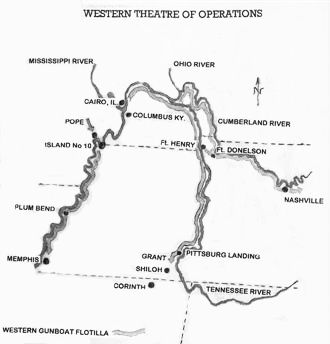
Most important from the standpoint of Army-Navy cooperation in joint operations, the set of officer ranks was redefined so that each rank in the Army had its equivalent in the Navy. The Bureau of Steam Engineering was added to the bureau system, testimony to the Navy's conversion from sail to steam. The institutional changes that were introduced during the war were equally significant. Guns were reduced in number, but increased in size and range the reduction in number was partially compensated by mounting the guns in rotating turrets that could fire in any direction. Wooden hulls were at first protected by armor plating, and soon were replaced by iron or steel throughout. Vessels of widely differing character were built from the keel up in response to peculiar problems they would encounter.

During the war, sailing vessels were completely supplanted by ships propelled by steam for purposes of combat. To accomplish these, the Union Navy had to undergo a profound transformation, both technical and institutional.

Support the Army by providing both gunfire support and rapid transport and communications on the rivers of the interior. Carry the war to places in the seceded states that were inaccessible to the Union Army, but could be reached by water.

Meet in combat the war vessels of the CSN. Maintain the blockade of Confederate ports by restraining all blockade runners declared by the President on Apand continued until the end of the Rebellion. The primary missions of the Union Navy were:ġ.


 0 kommentar(er)
0 kommentar(er)
